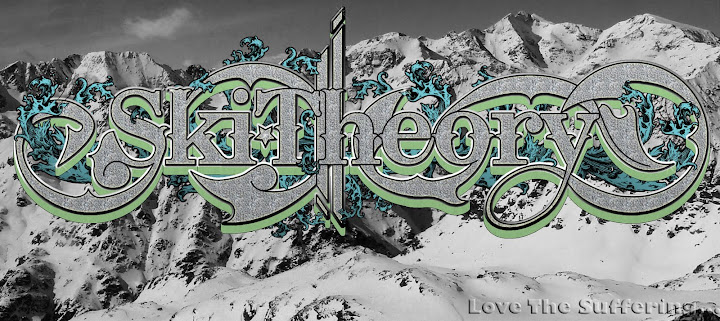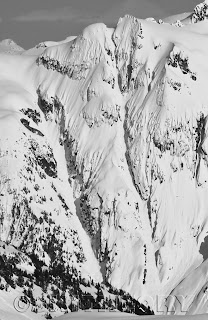But what is a great season? A great season is a season that allows you to greatly expand your experience as a backcountry and mountain person, build your skills, and give you adventures of a lifetime that are constantly different and always providing new ways of exploring the vast possibilities of what the mountains have to offer. Learning is what makes the best memories and makes us stronger human beings in the process. So with that, enjoy!
10 Tips To Have The Best Season Yet.
10. Take one course that will expand your skills.There are tons of great courses out there, avalanche, mountain rescue, first aid, navigation and more. Take a course in the area you feel weakest in, and round out your experience. Handling anything in the mountains is vital to survival. The Canadian Avalanche Association and American Avalanche Association have a plethora of different courses, ranging from professional Industry Training Programs (Level I, II, III), Mountain Weather, Avalanche Control Blasting, AST Level I or II, Avalanche Rescue, etc. Or if you into something else, take a glacier travel course with an ACMG guide, and learn crevasse rescue and risk mitigation techniques. All courses expand your learning, are ridiculously fun, and will help bring you to more places you dream of going.
 |
| (Photo Above: The beautiful and broken backside of Mt Athelstan, perfect for swallowing school buses and entire logging trucks) |
9. Train
Training and being prepared goes a long way. It makes the difference from skiing objectives that are nearby suffering from tracks, and remote untouched landscapes that excite and scare you. It is the difference between setting the skin track and being the first out to a peak, and being one of dozens heading out on a well trodden skin track. Leave everyone behind.
8. Ditch the heavy gear.
That heavy pair of Duke or Guardian bindings are making sure that all that hard training doesn't amount to much. They're slowing you down and you know it. Buy a pair of tech bindings, ditch the alpine boots, and maintain the same performance on the way down. The choice is yours, ski hardcore places or look hardcore. It's worth it, just check your ego at the door.
7. Learn "Old School" Skills
These days everyone relies on GPS and gadgetry to travel around in the mountains. And why not? It's there so we should use it. However, if those should fail we should always be able to make our way around and home without the use of technology. Learning resection, finding North without a compass, and telling sunset times from the sun are useful skills that can be added on to technology uses to move more efficiently in the mountains. Besides, if you have a GPS and totally screw up your navigation while practicing without it, it's there for you when you need it.
6. Ski an area completely differently than you are used to.
Everyone has their favourite stomping grounds. An area or traverse where you can go, know the terrain, and have fun regardless of how many times you've been there. But before you go the standard route, think about doing it differently. For example, if it's a traverse, go do it backwards, if it's a couloir, try climbing a different route to access it, rather than boot packing straight up it, a circuit add another peak or variation. The options are limitless, but as soon as you break the mould, you'll discover new features, and have a better view of the terrain you regularly travel though.
 |
| (Photo Above: Friend's on the Anniversary Glacier completing the Joffre Slalok Loop in reverse) |
5. Ski at least one full moon night this year.
Every backcountry skier has heard of amazing nights where the moonlight makes the night landscape appear as if it's daytime. Nothing is more special than dropping into an untracked couloir under a full moon and skiing powder under the stars without a headlamp.
4. Head on a hut trip every month, don't skimp on really good food.
Hut's are great. They are a great staging point to get amazing skiing in remote areas, pack lighter (or heavier on food), and have the added comforts that a tent or snow cave could never offer. That being said, some huts are busy, full of people who have little intention of skiing, are loud, snore, and can be overcrowded. So to revise, head to a remote hut with your friends, socialize on your own terms, and sleep comfortably throughout the night. You'll be rewarded with no people, a remote wilderness to yourself, and your own personal slice of paradise.
3. Find the longest fall-line ski runs in all your favourite areas.
There are runs in every area that people ski, but surprisingly, some of the best lines are not always the ones getting skied regularly. As a matter of fact, I can go ski my favourite lines off the back of Whistler or Blackcomb (also the longest lines) without ever seeing any tracks.... even when there are lots of other tracks on other runs. Bottom line: find the best lines, ski them as much as you can, keep them for yourself.
 |
| (Photo Above: Christina Lusti cruising up Mt Curry, after a season of skiing the Coast's longest lines) |
2. Ski a new area every week.
#2 and #1 are really a tie, as skiing a new area every week is just as memorable as a big trip. Each time you head into new terrain you build skills, expand your navigational experience, and generally don't get bored with constantly going to the same hut, same area, and becoming more complacent in dangerous terrain.
1. Plan and execute that big ski trip you've thought about for years.
This is a no brainer. Go somewhere bigger than you've ever been or dreamed of. These trips are burned into your memories from the commitment, effort, and thought behind them. Friends become brothers and sisters, decisions are forced to maintain movement, and communication becomes soundless between partners as seriousness increases. You know you want to live your dreams, now do it.



























